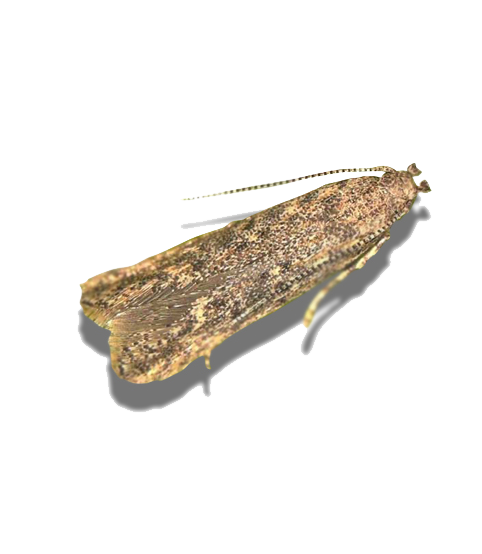


This pest is crossing borders rapidly and devastating tomato production substantially. Originating from
South America, Tuta absoluta is finding the shores of the Mediterranean a perfect new home where it can
breed between 10-12 generations in a year. The presence of Tuta absoluta has been reported in Italy, France,
Malta, the United Kingdom, Greece, Switzerland, Portugal, Morocco, Algeria, Tunisia, Libya and Albania.
Tuta absoluta has been an established pest of South America since the 1980’s. Tuta absoluta has the ability
to attack the tomato at all stages. That’s why Russell IPM have developed solutions to deal with this pest at
various stages of infestation.
The Tomato leaf miner is a serious pest of tomato. This insect can also attack potato, aubergine, peppers and
solanaceous weeds. It originated from South America and was recently detected in Spain, France, Italy,
Malta, Morocco, Algeria and Tunisia. Larvae produce large galleries in leaves, burrow into stalks, apical
buds and green and ripe fruits.
Tuta absoluta poses a serious threat to protected cultivation of tomato in the Mediterranean region. It is
capable of reducing up to 80-100% of total crop yield. Russell IPM manufactures and supplies Tuta absoluta
pheromone lure trap for monitoring, mass trapping and lure and kill solutions.
Technical Data Sheet
Adult Tuta absoluta moths are 5-7 mm long and have a typical wingspan of 8-10 mm. The adults have bead
like antennae, silverfish-grey scale wings with characteristic black spots on the anterior wing. They are
nocturnal and usually seek refuge between leaves during the day. The pest may overwinter as eggs, pupae or
adults.
Adult females lay about a total of ~ 250 eggs during their lifetime. Eggs are small cylindrical, creamy white
to yellow and ~0.35 mm long. Tuta absoluta will deposit its eggs on the underside of leaves or stems.
Hatching takes place after 4-6 days.
The total life cycle is completed in 30–40 days. There up to 12 generations per year.
The larvae of Tuta are cream in colour with a characteristic dark head. There are four larval instars. The
larval period lasts 10–15 days. Tuta absoluta has a high reproductive potential. Larvae will not go in to
diapause stage if food is available.
Pupae are brown in colour. Pupation takes place within 10 days on the leaf surface, in mines or in soil.
Tuta absoluta is a severe pest which can cause total crop losses. The young larvae penetrate into the tomato
fruits, leaves or stems on which they feed and develop, thus creating conspicuous mines and galleries.
Fruits can be attacked as soon as they are formed, and the galleries bored inside them can be invaded by
secondary pathogens leading to fruit rot.
On leaves, larvae feed only on mesophyll tissues, leaving the epidermis intact. Leaf mines are irregular and
may later become necrotic due to secondary infection. Galleries in stems alter the general development of
the plants.
Tomato plants can be attacked at any developmental stage, from seedlings to mature plants. The pest is
generally easily found because it prefers apical buds, flowers or new fruits, on which the black frass is
visible.
On potato, only aerial parts are attacked and Tuta absoluta does not develop on tubers.
Fruit damaged by Tuta absoluta becomes unsuitable for consumption.